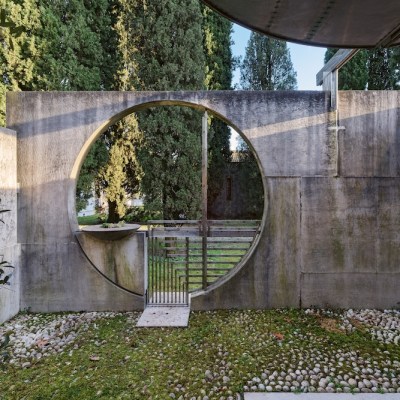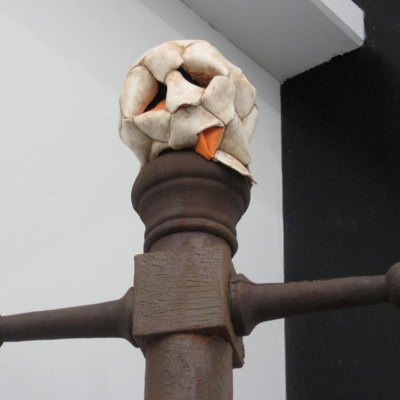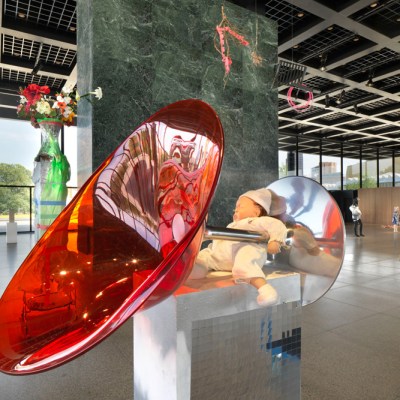From the November 2024 issue of Apollo. Preview and subscribe here.
‘Less is more,’ Mies van der Rohe once said, but the forensic clarity of this gnomic aphorism has long since blurred to become modern architecture’s equivalent of ‘live, laugh, love’. Paradoxically, it didn’t apply to Mies himself. Born plain old Ludwig Mies, he appended the ‘van der Rohe’ in 1921, adding the surname of his mother to distract from the negative connotations of the German word mies – ‘rotten’ or ‘dishonest’. The entirely confected ‘van der’ had a stout Dutch ring to it; or, to German ears, intimations of aristocratic lineage that might ingratiate him with potential clients.
For Mies, patrons were crucial, impelling a career that began as Germany emerged from the First World War and ended as men walked on the moon. Early on, there was the wealthy Tugendhat family and their eponymous domestic Gesamtkunstwerk, with its onyx walls and ‘radical emptiness’. Later, when Mies had decamped to the United States to escape the Nazi regime, there was the Seagram liquor magnate Samuel Bronfman, who was moved to hire an avant-garde German émigré to design the company’s New York headquarters by an eight-page missive from his 27-year-old daughter Phyllis Lambert, a letter that, it might reasonably be claimed, changed the course of modern architecture.
Then, of course, there was nephrologist Edith Farnsworth, who at a dinner with Mies in the winter of 1945 casually asked him if ‘some young man’ in his office could design her ‘a small studio weekend-house’. Yet for all its formal refinement, the Farnsworth House was to become a Via Dolorosa for both its client and architect. Not only was it beset by a four-year legal battle over costs; it was also flooded five times by the nearby Fox River.
Mies van der Rohe’s Farnsworth House (1945–51) in Plano, Illinois. Photo: © Hassan Bagheri
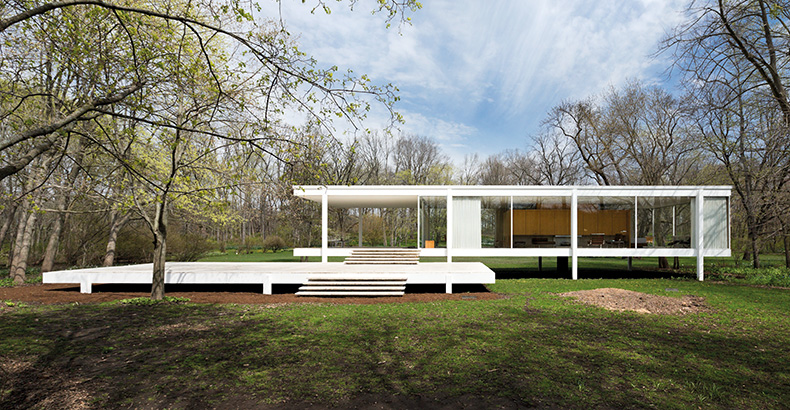
Mies disdained to position the house on a less exposed part of the flood plain, preferring to contrive a glass box hovering at an aesthetically satisfying remove over the landscape. ‘His impeccable sense of proportions (and not potential flood levels) dictated the distance of five feet from the ground,’ writes Dietrich Neumann in this new biography. It was not enough to save the house from the most serious flood of 1996, which destroyed most of the interior woodwork. By then, Edith Farnsworth was long dead, having sold up and retired to Italy in 1972.
Peter Palumbo, its new owner, was a hardcore Mies fanboy who attempted to transplant one of the master’s 18-storey office towers to Mansion House Square in the City of London. His quest was ultimately thwarted by a coalition of fogeys, headed by the then Prince of Wales, who described Mies’s tower as a ‘giant glass stump’ in his now notorious ‘carbuncle’ speech to the Royal Institute of British Architects in 1984. And so Britain remains technically a Mies-free zone, but his influence on the anonymous extrusions of capital that now populate central business districts from Dallas to Dubai is still palpable.
Imperator of what became known as the Universal Style, Mies declared in 1960, ‘I am, in fact, completely opposed to the idea that a specific building should have an individual character – rather a universal character that has been determined by the total problem which architecture must strive to solve.’ But there were other advantages, as Neumann points out: ‘Reusing floor plans and details with only minimal adjustments many times over was also a pragmatic and lucrative business model.’
In adding to the crowded field of Miesian monographs, Neumann promises ‘a gentle reevaluation of Mies […] more complicated, less heroic and more humane’. Yet it is still a physical blockbuster, the size and weight of a small tombstone – aptly, since Mies’s father was a monumental mason. Copiously illustrated with archive material and new contemporary photographs by Hassan Bagheri, it follows a conventional chronological structure, presenting the life of the Great Man carefully measured out in Great Works.
Mies van der Rohe’s Crown Hall (1950–56) at the Illinois Institute of Technology, Chicago. Photo: © Hassan Bagheri
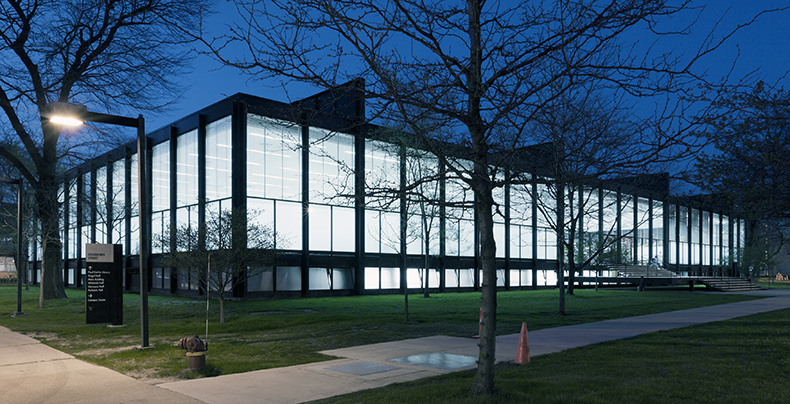
With remarkable prescience, one of Mies’s earliest identifiable projects in his birthplace of Aachen features a stone arch inscribed with the legend Zur Neuen Welt (‘To the New World’). His showstopping finale was the Neue Nationalgalerie in what was then West Berlin, which has recently been revivified by David Chipperfield, an outpost of contemporary art culture set slap bang by the Berlin Wall, on the historic outer edge of Western Europe.
Within this odyssey, certain details reverberate like depth charges. Notably, Mies’s ultimately doomed attempt to placate the Nazis through a ruthless ‘de-politicisation’ of the Bauhaus after the tenure of Swiss Communist Hannes Meyer. Along with other members of Germany’s intellectual and cultural elite, he was also invited by Goebbels to sign a public pledge of allegiance to Hitler. Driven by opportunism, Mies complied, but when this action was exposed after the war, fearful that it could damage his reputation and work prospects, he claimed that his signature had been added without his knowledge.
Neumann speculates that Mies would have seen the ‘sky-high flames’ of the 1933 Reichstag fire from the north-facing balcony of his Berlin apartment. By 1938 he had departed for the United States, although it was not immediately receptive. Mies found himself both suspected of being a Nazi spy and quizzed about Communist leanings. After eight years in the New World, he had completed only three buildings. But he stuck it out, the very model of late-career flourishing.
‘Less is a bore,’ quipped the American architect Robert Venturi, ushering in an era of postmodernist frippery that would have had Mies rotating in his tomb (in Chicago’s Graceland Cemetery, marked, natürlich, by the most exquisitely minimal slab of polished granite). But his posthumous reputation weathered such storms and he assumed the status of titan. ‘Architecture should be concerned with the epoch, not the day,’ he remarked in 1952. And the Miesian epoch is still very much with us. Live, laugh, love.
Mies van der Rohe: An Architect in His Time by Dietrich Neumann is published by Yale University Press.
From the November 2024 issue of Apollo. Preview and subscribe here.

